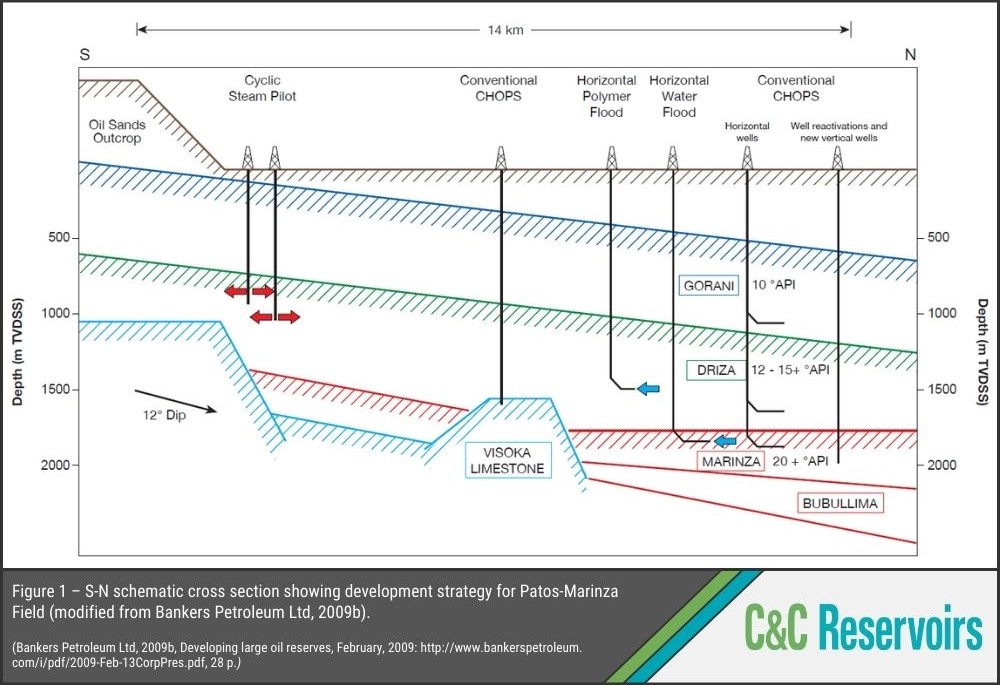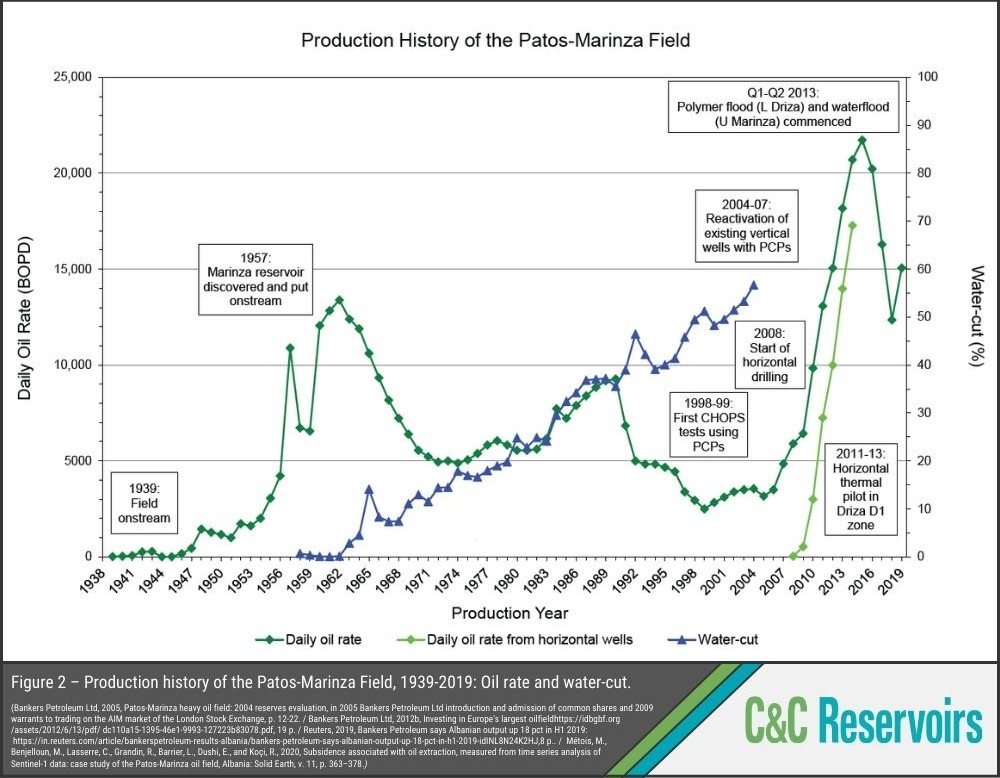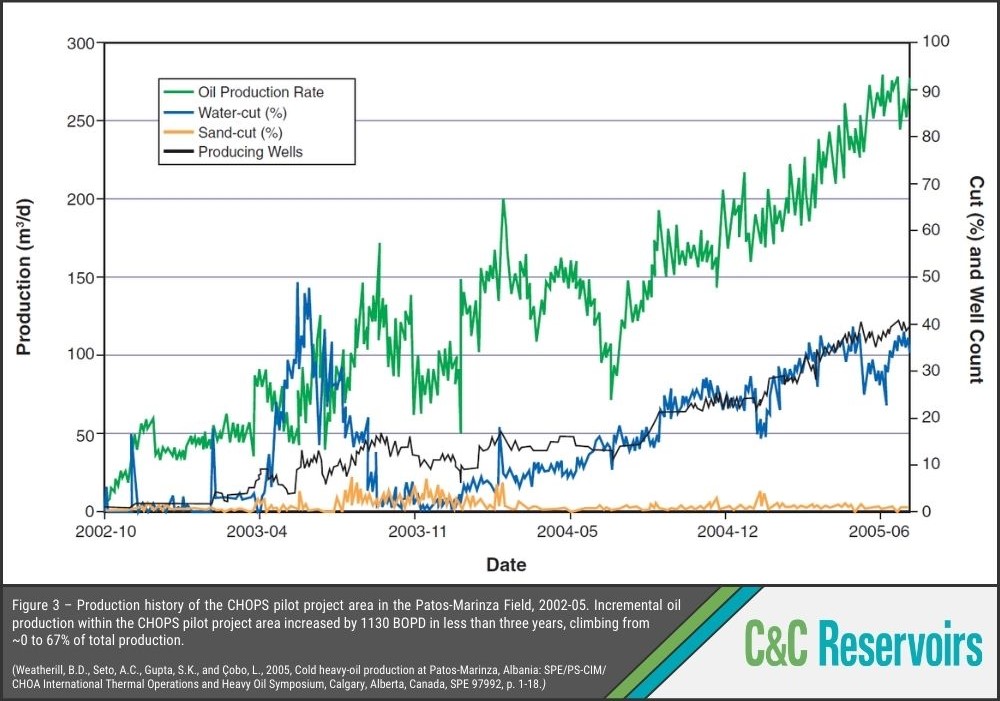Patos-Marinza Field
Analogue Spotlight
This week’s Analogue Spotlight focuses on the development of the Patos-Marinza Field (Albania). Discovered almost a century ago in 1928, Patos-Marinza, which contains mainly heavy oil in Miocene sandstones, came onstream in 1939 with an initial peak production in 1962. After extensive rejuvenation projects (Fig. 1) the production peaked again in 2015.
Several developments were made after the initial production peak that aided in the continued success of the field:
1962 ➡️ Production initially peaked at ~13,400 BOPD (Fig. 2).
2005 ➡️ Field rejuvenated, principally through the implementation of cold heavy oil production with sand (CHOPS) and extensive horizontal infill drilling (Fig. 3).
2011 ➡️ Cyclic steam injection pilot commenced, but economic recovery was not achieved.
2013 ➡️ A polymer flood and waterflood commenced in the Driza and Marinza reservoirs (Fig. 4).
2015 ➡️ Peak production reached at ~21,700 BOPD (Fig. 2).
By the end of 2019 the field had produced 191.6 MMBO through >2700 wells, including >550 horizontals. Patos-Marinza is a great example of field rejuvenation.
The Digital Analogue Knowledge System (DAKS™) contains many global oil and gas analogues specifically focused on heavy oil fields. Use these analogues to benchmark your own field, and delve into C&C Reservoirs Reservoir Evaluation Reports to discover best practices from top performing reservoirs that can be applied to your own assets.




